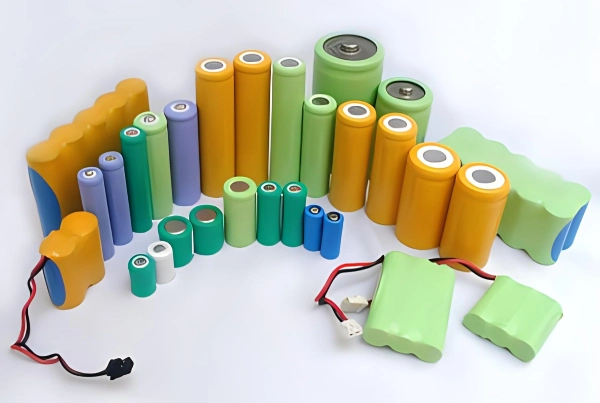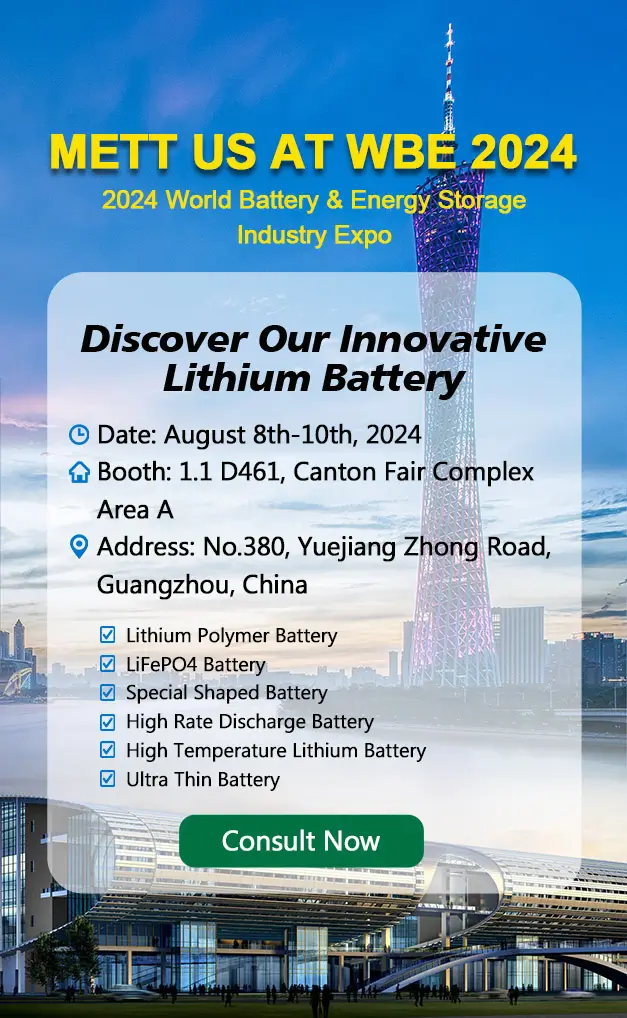The demand for batteries continues to expand as the number of tools and devices that rely on this technology increases. Users looking for the best battery technology may want to consider the differences between lithium-ion and nickel-cadmium batteries and the suitability of each option.
Nickel-cadmium batteries came before Li-ion batteries, so they were the sole option for users for a long time. The arrival of the Li-ion battery technology changed the dynamics with the introduction of batteries with lower weight, less maintenance, and increased safety.
This battery guide presents the lithium-ion versus nickel-cadmium battery comparison for the best buying decision.

Part 1. Battery Working Principle
1. The components
Whether lithium-ion or nickel-cadmium type, the battery contains three fundamental components: the electrolyte, electrodes, and separator. The electrolyte facilitates the passage of electrical charge between the electrodes while the separator prevents the direct contact of the anode and cathode.
The specific materials for these components in the two batteries are different though. For instance, while lithium-ion batteries have lithium oxide and graphite as the electrodes, NiCad batteries use nickel oxyhydroxide and cadmium.
The electrolyte in NiCad batteries is aqueous potassium hydroxide, while lithium-ion batteries are called lithium salt.
2. Redox Reactions
The working principle of these batteries follows what is called a reduction-oxidation (redox) reaction. A redox reaction is a combination of two chemical reactions, oxidation and reduction.
The steps
- Upon completion of the circuit, chemical reactions take place in the battery. Ions start moving from one electrode to another.
- Oxidation takes place at the anode, leading to the release of electrons.
- Electrons flow from the anode to the cathode via the external circuit.
- Reduction takes place at the cathode, which consists of these electrode electrons.
- The electrical circuit is complete with the movement of ions in the electrolyte.
- An electrochemical balance involving ions in the battery and electrons in the external circuit ensures continuous electric energy production.
Part 2. Capacity and Energy Density
The energy density of a battery refers to the amount of energy contained in the battery in comparison to the size or weight of the battery. Both of these batteries offer admirable energy density. However, Li-ion batteries tend to have a higher energy density than Nickel-cadmium types. This explains why Li-ion batteries are normally lighter and smaller.
When you need a lot of energy in a limited space, you may want to pick a battery with higher energy density. A good example of such applications is in smartphone battery technology.
The battery capacity refers to the amount of current the battery can produce in an hour, say an hour. The typical units for battery capacity are watt-hours (Wh). If a battery has a higher capacity, it can produce more power over a longer time. Related to the energy density element, the Li-ion batteries offer more capacity than the NiCad batteries.
Here’s a table summarizing the lithium-ion battery vs. nickel-cadmium battery differences:
| Li-ion battery | Nickel-cadmium Battery | |
|---|---|---|
| Capacity (watt-hours) | High | Moderate |
| Energy density (Wh/kg) | High | Moderate |
Part 3. Charging and Discharging Efficiency
The charging efficiency of a battery is the ratio of the amount of energy used to charge the battery to the amount of energy that the battery stores. If a battery consumes 10kWh to charge and saves 9kWh, it has an energy loss of 10%.
As for the battery discharging efficiency, the ratio is between the energy discharged and the energy that reaches the load. Energy loss in the inverter and the battery means that the efficiency will typically be less than 100%.
In both of these scenarios, the nickel-cadmium battery offers less efficiency than the li-ion battery.
| Li-ion Battery | Nickel-cadmium Battery | |
|---|---|---|
| Charging efficiency | High | Lower |
| Discharging efficiency | High | Lower |
Part 4. Memory Effect and Self-Discharge
If a battery is incompletely discharged in previous instances, it suffers longevity reduction. This phenomenon is called the battery “memory effect.” The nickel-cadmium battery types are particularly notorious for this type of deterioration when they are partially discharged and then charged.
The memory effect essentially reduces the capacity of the battery. Poor-quality chargers can also trigger this problem.
Self-discharge is a phenomenon whereby the charge in the battery reduces. In contrast, the battery is not connected to any load. The self-discharge rate depends on several factors, including the battery technology, ambient temperature, and the ratio of acid to mass. On this one, the NiCad batteries are faster than the Li-ion batteries.
| Lithium-ion Battery | Nickel-cadmium Battery | |
|---|---|---|
| Memory Effect | None | Present |
| Self-discharge rate | Slow | Faster |
Part 5. Environmental Impact
If the battery ends up in the landfill, its remains can contaminate the environment – water, air, and soil. Of the two types, the NiCad batteries are the more toxic to the environment if poorly disposed of. This type’s consumer and industrial varieties contain 18% and 6% cadmium, respectively. Cadmium is a heavy and toxic metal. That’s why, in the United States, the price of the NiCad batteries includes a portion for proper disposal once the product reaches its service lifetime.
Applications and Market Trends
Regarding the energy storage market, the lithium-ion and nickel-cadmium batteries are uniquely different and useful. Lithium-ion batteries’ lightweight and energy-dense nature suits renewable energy storage and portable device applications. The reliability and long-lasting capabilities of the NiCad batteries appeal to aviation and other critical industries.
However, there is a market trend of users leaning towards Li-ion batteries because of the need for sustainability and cost minimization. NiCad batteries present serious environmental challenges, so experts think their adoption will most likely reduce as that of Li-ion batteries increases.
Energy storage stakeholders need to be aware of these applications and market trends when analyzing nicd vs. li-ion batteries.
Part 6. Conclusion
Most modern applications would prefer the Lithium-Ion battery over the Nickel-cadmium battery for energy density, longevity, and portability. They also prompt users to go with the Lithium-ion battery.
However, even with the memory effect and self-discharging aspects, there are still instances when the nickel-cadmium battery would be a better choice. For instance, this type works better in extreme temperatures and devices that need higher power.
Here’s a summary of the differences between NICD vs li-ion batteries:
| Feature | Nickel Cadmium Battery | Lithium Ion Battery |
|---|---|---|
| Capacity | Moderate | High |
| Energy density | Moderate | High |
| Charging and discharging efficiency | Lower | High |
| Memory effect | Present | None |
| Self-discharge | Faster | Slow |
| Environmental effect | High | Minimal |
| Applications | Backup and critical applications | Portable and energy-dense devices |
Given that there are usually trade-offs involved in lithium-ion batteries vs. nickel-cadmium batteries, it is worthwhile to carefully consider all the factors before selecting a battery.
Hopefully, this lithium-ion battery vs. nickel-cadmium battery analysis has helped you choose. Contact us for more battery guides and tips.
Related Tags:
More Articles

Overview of Deep Cycle Lithium Battery
In this article, we explore the life, voltage, capacity, and charging considerations of deep cycle lithium batteries.
How Long do Lithium Batteries Last?
How long do lithium batteries last? we will explore the factors that influence the lifespan of lithium batteries and provide insights into their longevity.
How to Choose the Best LiFePO4 Battery?
Choose LiFePO4 batteries for superior performance, safety, and versatility in EVs, UPS, and backup power. This guide helps you make informed decisions.
Get 12v Lithium Car Battery As a Power Source for the Ride
Make the right choice for your vehicle's battery needs by installing a 12 volt lithium car battery. You will enjoy maintenance-free longevity with this change.
Everything About A Small Lithium Ion Battery
Discover the features, uses & future potential of a small lithium ion battery. A compact and tiny powerhouse ideal for smartphones, wearables, drones & more.





